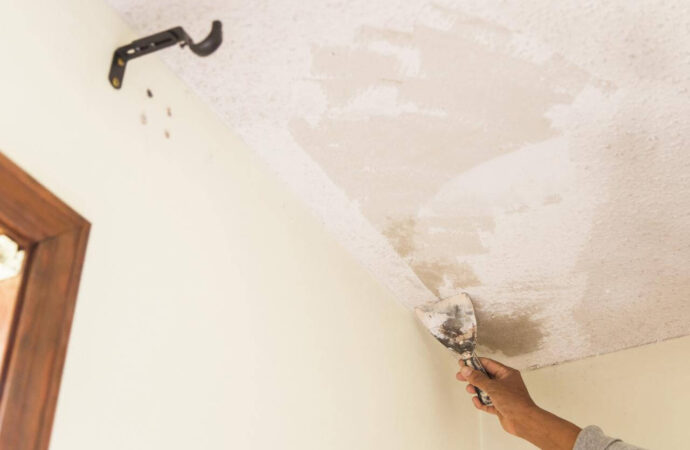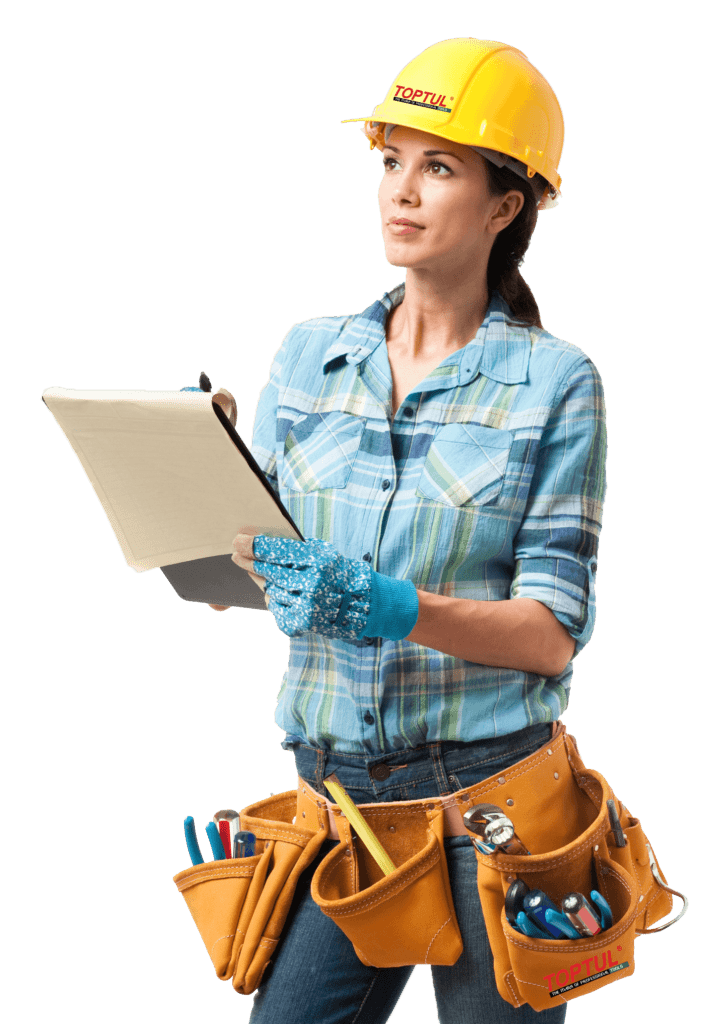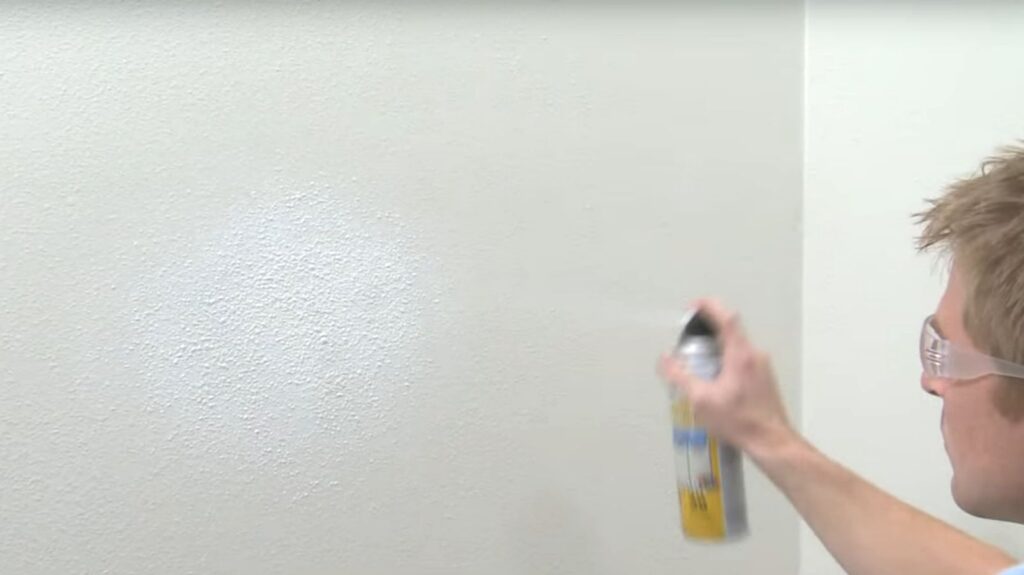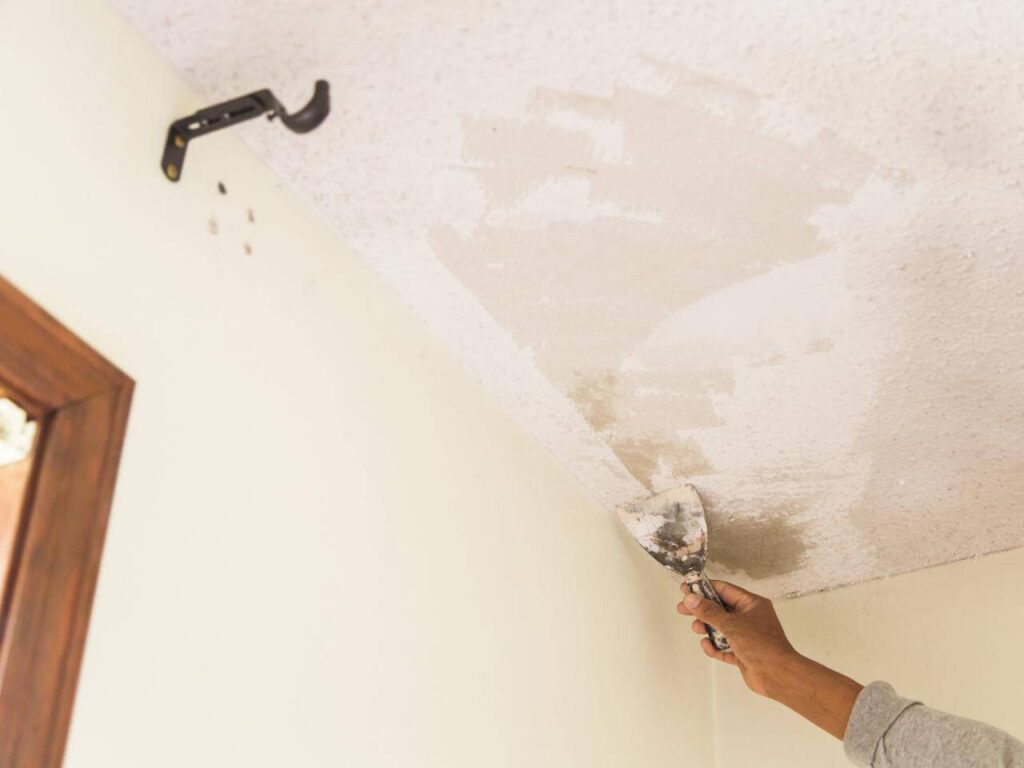Texturing walls and ceilings can add some character to your home. If you don’t do your research and learn how to apply a texture to your walls or ceilings correctly, you could end up spending a lot of money. Knockdown and orange peel are two of the most common textures. What are knockdown and orange-peel ceiling, and how does it compare? Knockdown texture is a texture that’s added to walls with “drywall mud.” Orange Peel ceiling is typically applied with a texture sprayer. Knockdown texture, on the other hand, is applied using different methods. A trowel flattens the surface for a cleaner, more polished finish. There are some critical differences between knockdown texture, orange peel, and other types of surfaces. They differ in the final surface, its application, and the work required to maintain it. Understanding the differences between these wall textures is essential to avoid disappointment and reduce your expenses. Knockdown texture can be used to texturize your walls in various ways. This texture can be applied to your wall in a variety of ways. Stomping or splatters are two of the most popular methods. Each of these textures requires different tools to apply, but what makes a texture knockdown is the use of a flat tool to flatten it and create a smoother finish. There are many ways to apply knockdown wall texture to your wall. There are many ways to begin the process. However, the process’s final step determines whether the texture will be called “knockdown.” To apply drywall mud to the surface, you can use a paintbrush, a texture sprayer, or a paintbrush. After applying the texture to the wall, wait for the drywall mud and drywall glue to dry. After the texture has dried, you need to use a trowel or another tool to flatten the surface. This will give the wall a smoother and less bumpy finish. The orange peel ceiling has a more irregular and rough texture than a knockdown. The texture’s name comes from its appearance and feels, similar to an orange peel. This texture is more complicated and requires a unique mixture to prevent the “mud” from slipping down the walls. Orange peel has fewer application options than knockdown textures. However, orange peel can also be made from drywall mud but is typically only applied with a texture sprayer. Mixing the drywall compound with water creates an orange peel. This mixture sticks to the wall. After the combination has been integrated, you can use a texture sprayer to apply it to the wall. There is no extra step in this process, unlike knockdown texture. After the surface is dry, it can be flattened. Because knockdown texture and orange peel are made of the same materials, I won’t discuss mixing them in this section. After the mix is correct, you can spray the orange peel on the wall with a texture gun. The “mud” must dry before you can apply a second coat. However, the knockdown texture is more labor-intensive and requires more tools. After the mixture is applied to the wall with a trowel, spray gun, or brush, flatten it by rubbing the area. You might need to use the texture one coat at a time, depending on how it is applied. Knockdown texture takes more effort, tools, and time to create. Orange peel is the most effortless texture to apply. Understanding the effort and work required to maintain a texture is essential before you start to texture it. It is crucial to think about cleaning, painting, and how you can repair and patch damaged areas. It is not difficult to paint textured surfaces, such as walls, without extra effort. To achieve the best results, you will need primer and paint. Primarily, you'll need to coat the textured surface with primer. Primer will protect your texture from any damage. It will also allow the paint to stick better and make it less messy. After applying the primer coat, let it dry before you begin painting. It is much easier to paint a textured surface than flat surfaces. It is essential to paint the walls entirely without using too much paint. This will remove the texture effect. For most surfaces, you can use a roller and a brush for those in corners or difficult-to-reach places. After applying the first coat, let it dry before using the second. There are two reasons you might need to repair or replace a portion of your textured surface. Orange peel can be easily repaired or patched because there are only three sizes of spray guns available. The rest of the procedure is the same. Make a mixture of drywall compound with water, then spray it onto the area. Cover the area until it is similar to the rest. After the texture is dry, paint the room with primer. It is possible to repair or fix your knockdown texture, but it can be not easy depending on how complex the surface is and your ability. If you have the right tools, you can recreate the texture by applying primer and painting the same color to the affected area. If you don't have the right tools to replicate the texture, you may need to hire West Palm Beach Popcorn Ceiling Removal & Drywall Pros. Even then, you might not be able to do it again. If the original design was complex, knockdown textures could be challenging to reproduce and repair. Some people reported having to cover or redo the entire surface to make the repair look right. You have a better chance of fixing damage using orange peel texture than knockdown texture when it comes to repairs or patching. Both textures have similar components like water and drywall compounds, but they are not as durable. The texture’s size and the parts that make up the texture determine their durability. Orange peel is made up of delicate sprays of mixture droplets that stick to the surface you are texturing. Although orange peel texture seems to cover more surface area, the droplets are so tiny they are more robust and less likely to break or be damaged. Texturizing a wall with a knockdown texture requires that the mixture be flattened. The fragile drywall mixture can easily be damaged once it has dried. Because the orange peel is used for texture, customization is not possible. You only have one option: the size of your spray gun’s nozzle. Orange peel uses the most miniature spray gun to get the best results. However, larger spray guns are often used for other textures such as knockdown. The knockdown texture is one of the most flexible forms of texturing. This texture is customizable in many ways, as seen from the variety of tools you can use. Different applications will produce different results. You can find the right tools to achieve your desired look by researching them. In the United States, orange peel drywall texture was quite common during the 1980s and early 1990s. Hand textures like hawk and trowel or skip trowel became more popular in the 1990s and 2000s. Although you don’t often see orange peel texture in new construction in the Southwest United States anymore, it has been resurgent in other areas of the country. Hotels and large commercial buildings often have orange peel texture. Spray knockdown texture is more common than orange peel in these types of buildings. Many people mistake knockdown texture for orange peel texture. How do you know the difference? Both knockdown and orange peel textures are sprayed with the same equipment. Orange peel, however, is thinner and dried immediately after spraying. Knockdown is a method of smoothing the surface, or “knocked down,” shortly after pouring. Knockdown globules are much larger than orange peel and spread across the surface. Orange peel is applied to the entire surface of the drywall, covering it with a thin layer. This prevents the underlying drywall from showing through. However, knockdown can expose minimal areas of drywall between the globules filled with sprayed drywall glue. The orange peel texture is very similar to Spray/splatter knockdown. A long hose is used to pump texture mud into a spray nozzle. A high-pressure air line runs parallel to the mud hose. The spray nozzle is filled with air and mud, causing the texture of mud to be sprayed into small droplets. These tiny droplets of drywall clay mud settle on walls and eventually merge to form a thin layer of mud. The texture of mud becomes a peel-like consistency as it dries and is thus called the orange peel. Spraying orange peel texture requires a smaller tip than the one used for a knockdown and a slightly higher air pressure. This allows the droplets of mud to exit the nozzle to be smaller than those from the knockdown texture. They will merge into a uniform film rather than remaining in globules. Spraying orange peel texture on a surface is the most challenging part. Spraying an even orange peel texture can be more complex than pouring knockdown. This technique is the same as spraying paint on walls. You can also back roll your surface when spraying paint using an airless sprayer to smoothen out uneven areas. This is not possible with orange peel texture. The texture must remain in place. We offer the above services at the following locations within West Palm Beach:
If you are located in Palm Beach County and you don’t see your city/area listed above, don’t worry! We cover all of Palm Beach County. Fill out the contact form above or CLICK HERE and send us a message. We’ll get back to you asap!
Orange Peel Ceiling
Contact Us

How Knockdown Texture is applied
How orange peel texture is applied
Orange Peel or Knockdown Texture is easier to apply
Orange Peel or Knockdown Texture is Easier to Maintain
Painting:
Repairs:

Orange Peel vs. Knockdown Texture Durability
Which texture is more customizable?
What is it? Orange Peel Texture, Knockdown?
How to apply orange peel texture

Locations We Serve

